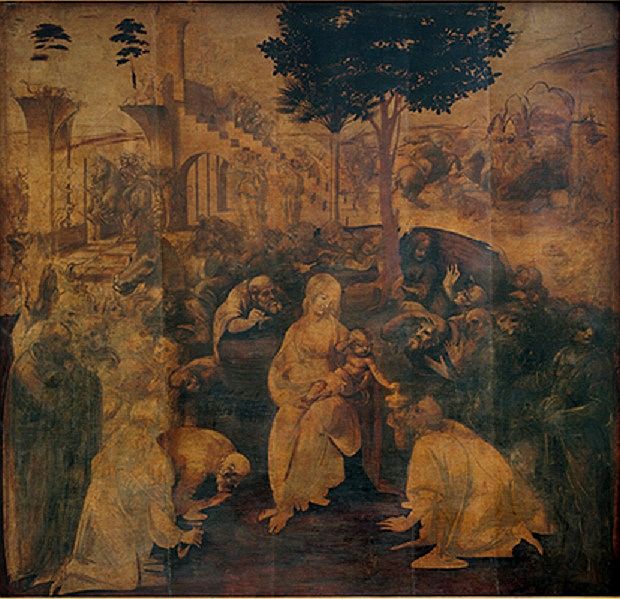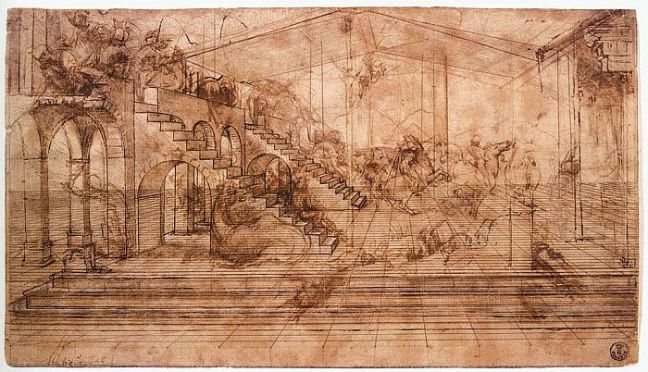
After six years of restoration and inspection, Leonardo da Vinci’s The Adoration of the Magi is back at the Uffizi Gallery in Florence.
Leonardo was commissioned to paint the “The Adoration of the Magi” in 1481 by the Austin Friars but stopped painting after a preliminary study upon leaving for Milan in 1491. Another altarpiece depicting the Adoration of the Magi was commissioned from Filippino Lippi and completed in 1496, while Leonardo’s work found a home in the palazzo of the Benci family in Florence, later joining the Medici family’s collections.
At 246 x 243 cm, the work is the Uffizi’s largest panel painting by the artist.

(Perspectival study for The Adoration of the Magi, c. 1481.)

